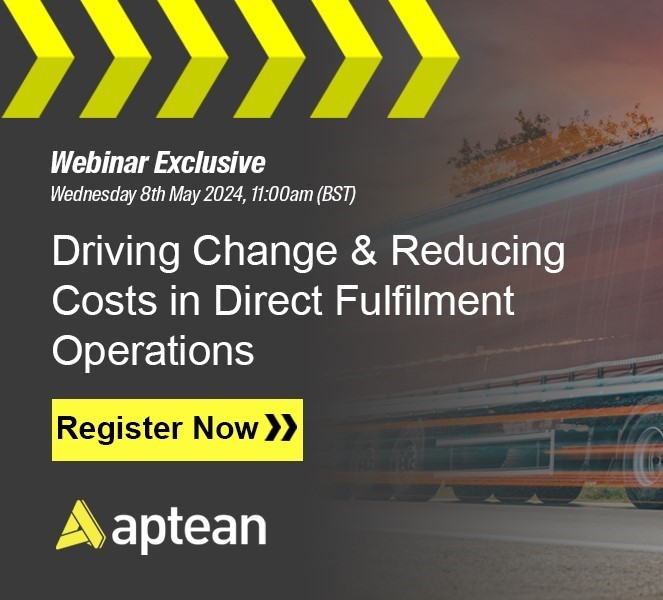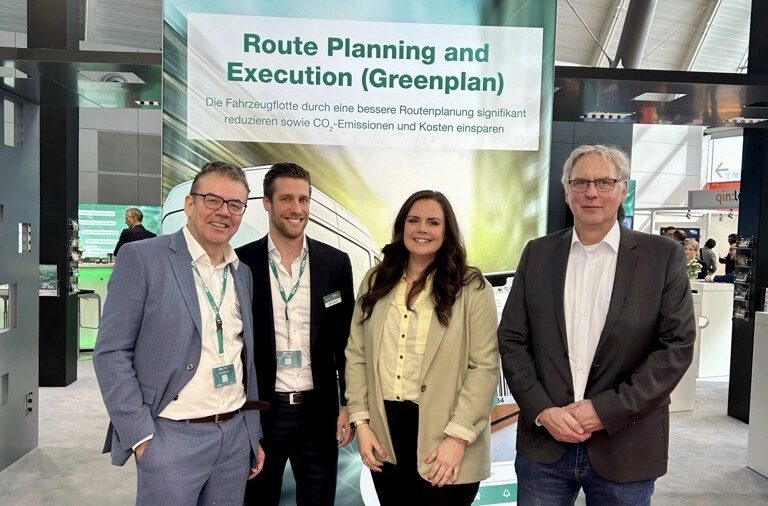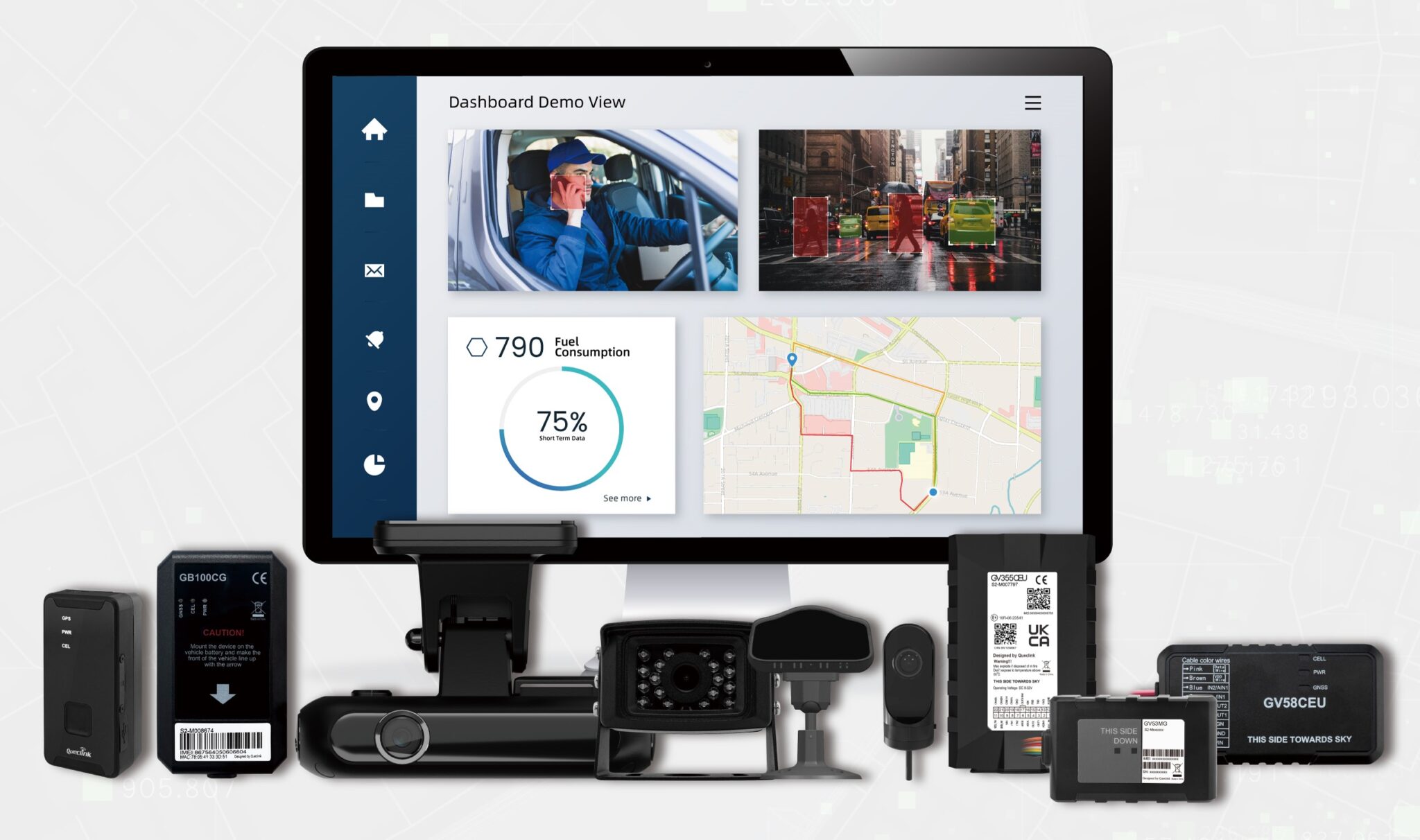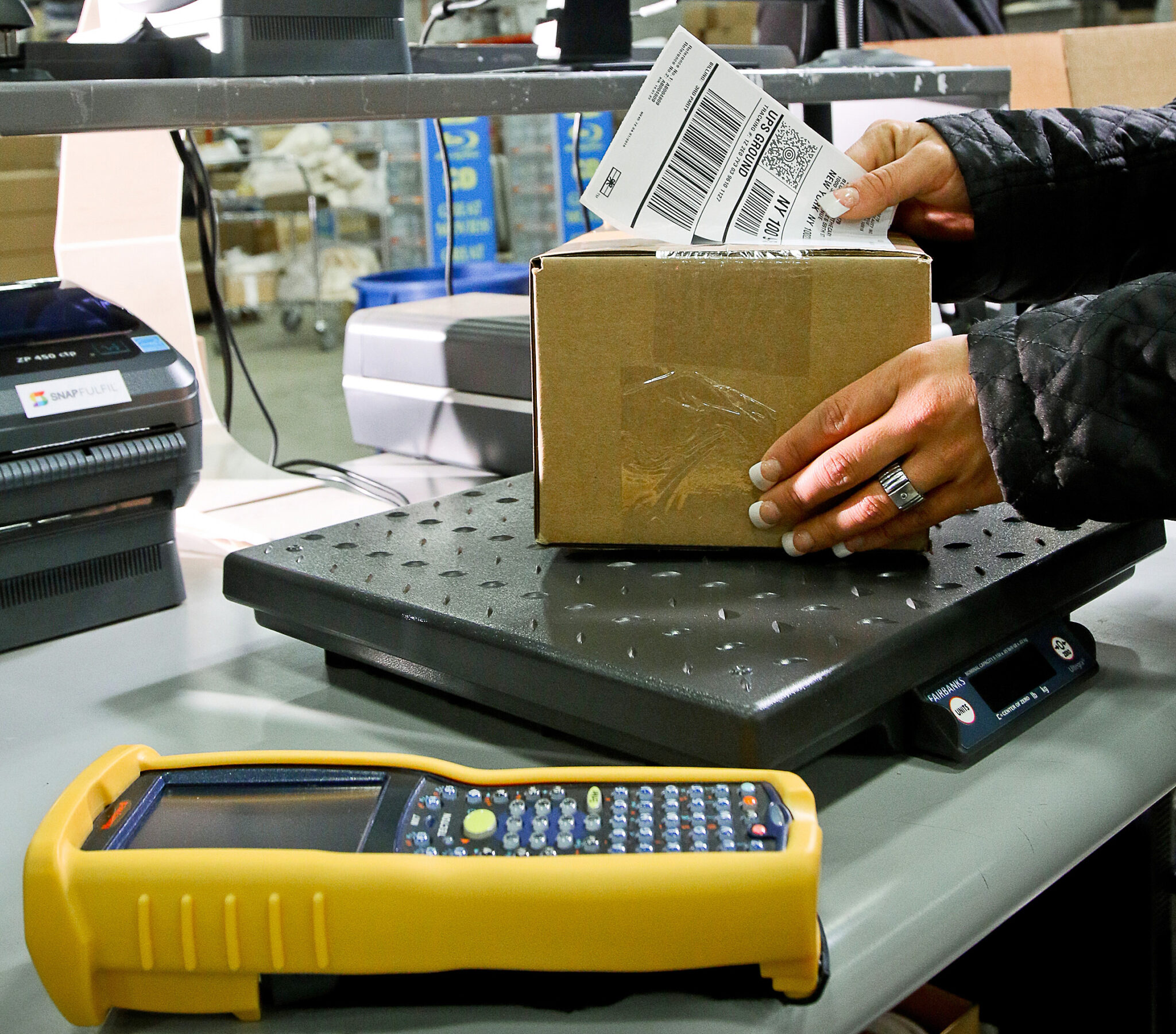We can observe that all small or large scale businesses are in a serious search for the digitalisation of transportation, writes Oğuzhan Karaca (pictured). We can also notice from their questions and views that they cannot find a clear answer to their search. In terms of B2C logistics, it is obvious that they complain about the slowness in the reflection of rapid digitalisation on B2B processes. They seem to ask why it is not possible to see the rapid digitalisation experienced in last mile delivery, micro distribution and cargo processes also in FTL (Full Truck Load), LTL (Less than a Truck Load) and Partial Loads.
Although entrepreneurs and start-ups have not yet made a serious presence in the road transport segment, they are still not discouraged, they continue to focus on the subject, but on the contrary, investors seem to stay away from this segment. In fact, although it has much simpler processes than last mile delivery, investors seem to be hesitant to foresee the effects of the re-sistance of the carriers to digitalisation. The lack of a success story in the digitalisation of road transportation segment also affects the decision of investors, or the bad taste left on the palate by the many failures still prevails.
Let’s take a look at the digitalisation journey of transportation together. Actually, everything has started and developed with the introduction of TMS (Transportation Management Sys-tems) into our world. Let’s take a look at what the major ERP players say about TMS and how they define it.
Oracle defines TMS as ‘‘A Transportation Management System (TMS) is a logistics platform that utilises tech-nology to help businesses plan, execute and optimise the physical movement of goods, both inbound and outbound, ensuring that the entire transportation pro-cess complies with applicable laws and that appropriate documentation has been obtained. Such a system is often part of a larger supply chain management (SCM) system.’’
The definition of SAP is as follows: SAP Transportation Management application integrates fleet and logistics management throughout your network, helping you to reduce complexity, increase efficiency, and improve agility for a more sustainable, risk-resilient supply chain.
In fact, both definitions draw a picture of digitalisation that supports process management and presents the efficiency that will arise from the organisation of work-flows as a value proposition. It is difficult to observe that TMS has been actively used outside of large corporate companies.
At the SME scale, it would be correct to say that TMS does not exist at all. We know that a simpler version of TMS is used as a fleet management tool in logistics companies. It mostly serves as an algorithm focused on repair, maintenance, service and consumables man-agement of assets and fuel expenses. In addition to this, they also provide support for driver work planning, calculation of overtime, per diem and premiums. TMSs also have menus for customer invoicing and document management. Then, why have TMSs not been able to go beyond large corporate companies?
The answer to this is actually simple, because TMSs do not reflect the reality of the field, cannot show the big picture, and cannot offer a value proposition to companies outside of process management.
Shannon Vaillancourt, in one of her articles, lists 3 reasons why the TMS has failed, among them, the third one attracted my attention the most: “Your TMS isn’t providing the complete picture. When you don’t have the data you need, the promised analyt-ics are either unavailable, insufficient, inaccurate or late. The data you require to improve your efficiency is not available through current sources. If you have data, it’s likely uncleansed, unstructured, and unstandardized. Or, your TMS is incapable of ingesting, processing, and reporting it. You’ve created a data lake but are drowning in data and starving for intelligence.
Plus, data collection is only part of the problem. Your system needs to be able to process the voluminous da-ta, identify trends and provide actionable insights. What analytics you do have are historical, and by the time you identify a problem or issue, it’s too late. The money is already out the door, the marketplace has changed, or your processes have not kept up, and you have new problems. Your TMS has value but not the answer.”
I agree with Shannon Vaillancourt’s view; in fact, existing TMSs have not gone beyond being a Business Process Flow Management tool. It has failed to produce an an-swer for users from the processed data and to show the big picture. In short, it remained passive rather than proactive. It could not proactively strengthen itself with data analytics and smart decision support mechanisms.
Behind TMSs, the development of Load Boards catches our eye. What is the role of load boards, which are very actively used in America, in the digitalisation of transportation?
Let’s see how ‘‘DAT Load board’’, one of the most widely used load boards in America, defines itself. “The DAT load board is more than just a list of loads. The DAT load board is a place to develop relationships with freight brokers and shippers — and your key to building a smarter trucking business. Access the most comprehensive freight listings anywhere in the industry. Make the most of pricing tools to find your best rates. Re-search broker credit history for trustworthy transactions.”
When you think of a load board, you actually imagine a world where the shipper posts its load, the carrier plac-es an offer, and the carrier that offers the best price at the end of the tender receives and successfully performs the work, right?
We observe that both the shipper and the carrier utilise load boards as a means of gaining access to data. It would not be wrong to say that if there is big data, there is a need for data mining, otherwise no value can be generated from the data.
So, who mines this data? ‘‘brokers’’ and ‘‘forwarders’’ perform the mining on behalf of the shipper; ‘‘dispatchers’’ (fleet managers, mediators) perform the mining on behalf of the carrier, and at the end of the day, they call everyone on the short list created through the load boards by phone and attempt to finalise the sale. In other words, we can think of load boards as places where the buyer and seller can access potential jobs as a result of data mining and where each opportunity must be manually handled one by one.
In other words, it is an important source of data in the journey towards the digitisation of transportation, but that’s it – the rest is up to your data processing capability. In fact, DAT expresses itself very well in its explanation: it defines itself as a place where shippers and mediators can develop a business relationship, which actually coincides with our evaluations; the job is finalised with phone calls and emails.
The Truckingoffice.com website has listed the advantages as well as the disadvantages of load boards as follows:
Disadvantages of Load Boards for Freight Management
Although load boards can be helpful in many ways, they are not a good long-term strategy. Why? For one rea-son, they are not very profitable. You’ll be better off get-ting direct contracts so you are in control and can keep all of the revenue.
Other disadvantages of load boards include:
• You’ll be dealing with strangers (who you hope are trustworthy).
• Lots of competition for loads.
• Freight brokers take a lot of the revenues.
• Their rates for your work are low.
After the experience of load boards, we witness that ‘‘Digital Freight Forwarders’’ are becoming widespread. So, what is the difference between a normal ‘‘forwarder’’ and a ‘‘digital forwarder’’?
Actually, at the end of the day, both produce the same service, however, ‘‘digital forwarders’’ have the ability to manage all business processes digitally, have reduced telephone and email traffic, offer instant invoicing, archiving, document management, traceability and opportunities to benefit from the benefits of artificial intelligence. The most important feature that distin-guishes normal forwarders from digital forwarders is the capability of instant pricing, but the number of digital forwarders who can provide this service seems to be quite small. ‘‘Digital forwarders’’ that have improved this capability seem to be one step ahead of the others.
Well, why is there hardly any example of a very successful ‘‘digital forwarder’’ on a global scale? Let’s take a look at the example of ‘‘CONVOY’’, which was supported by Jeff Bezos as an investor, which has reached a value of 3.8 $ billion. Then, why was the ‘‘digital forwarder’’, which reached such a high value, suddenly shut down by the end of 2023?
Mark Solomon, published an article on freight-wave.com on Monday, October 23, 2023 with the following title:
“Convoy’s tech focus may have obscured importance of human element.”
C. Thomas Barnes, a longtime transport executive who today is an investor in transport logistics companies, said Convoy failed because it didn’t have enough people with insider know-how to counterbalance the new ideas that typify an outsider’s mentality. “Is there a need for technology? Hell yes!” Barnes said. At the same time, it is vitally important to have traditional problem-solvers on the inside to make everything work, he said. Convoy’s failure is a microcosm of a larger problem, Barnes said. Many good outsider ideas go by the board because the insiders’ capabilities to support them are not there or because a balance between the two mindsets hasn’t been struck, he said.”
In fact, we see that the excessive technology focus of ‘‘digital forwarders’’ has overlooked the human resource factor in supply chain management and logistics. Both in the modelling of the process and in the management of the micro-operations. Therefore, there is a clear need for a hybrid model that will integrate both the digital and the human talent factor.
‘‘The best answer to the question of what will be the future of digital forwarders can be found in Prof. Dr. Stefan Iskan’s article Start-up or Old School Freight Forwarder? Who is in the best shape to win?
“We will see some of them unfortunately disappear from the market. Others will evolve into software pro-viders. Others will be acquired by logistics giants. Offer: Startup reaches out to SMEs for cooperation. Medium-sized companies, please take this opportunity. After all, startups will evolve into a new kind of software provider and TMS provider. Cooperate. Whoever manages to perform this incredible integration job will catapult itself to the top of the supply chain with its customers.“
Although this is a bit pessimistic, it is a very strong interpretation of reality. It seems that especially the focus of start-ups on SMEs will be a real starting point for them. There are serious opportunities in the SME segment, and the future of start-ups lies in digital integration with SMEs.
Up to this point, we have discussed the transformation of ‘‘TMS’’ into ‘‘Load boards’’ and then into ‘‘Digital forwarders’’, I believe it is necessary to address the financing dimension of the business a little bit.
In America, the factoring service is very intertwined with the transportation sector. In the ‘‘Rate confirmation’’ document signed between the shipper or broker and the carrier, the shipper offers the ‘‘Quick Pay’’ alternative to the carrier as well as the 30/60/90 days late payment terms and the majority of carriers prefer to receive their payments in cash from Factorings despite a financial cost amounting to 2-4%.
The answer to this question is actually simple, it is obvious that the carrier needs cash flow in order to cover its operational expenses. Fuel, repair, maintenance, porterage and similar expenses arise in every transportation and the carrier has to pay these expenses in cash in order for the trade to continue. And carriers, of course, prefer to receive their money from factoring for a rea-sonable price rather than collecting it from the shipper on a deferred basis.
We cannot ignore the importance of freight payment and payment speed in transportation. Digital forward-ers should not isolate themselves from the payment and financing dimension of the business. They need to offer alternative modes of payment to both the shipper and the carrier and use them effectively.
In the light of all these developments, the DIGINAK.com initiative has introduced a new concept: “Digital Freight Ecosystem”. The initiative promises an ecosystem where all players in the supply chain sector can work with each other in a healthier and more efficient manner rather than merely bringing the shipper and the carrier together.
DIGINAK proposes a supportive model that is not aimed at eliminating mediators for all parties but rather at enabling intermediaries to better manage the micro-operation rather than creating a disruptive effect. A transportation model is proposed in which all parties can invite their immediate circle into the DIGINAK eco-system and work effectively with each other.
Shippers, forwarders, brokers, mediators, brokers, carriers, banks, financial institutions, insurance companies and all other parties are part of this ecosystem. DIGI-NAK does not believe that the need for matchmaking in B2B transport processes is at a high level, on the contrary, it believes that the parties are highly integrated and connected with each other. However, based on the determination that a sustainable relationship cannot be achieved due to the lack of a healthy working environment, it has focused on improving the working conditions between the parties.
In countries where the asset investment is made by the owner operators (this is the case in many countries except the European Union), the effort to bring the shipper and the owner operators together does not yield the desired result. In fact, it is also a myopia to present this effort as the digitalisation of transportation.
The load finding behaviour model of the owner operators involves a unique ecosystem and sociology. In America, freelancers, who are called ‘‘dispatchers’’ but do not have a full legal equivalent, offer services to the carriers in finding the freight. On the shippers’ side, brokers manage the whole pro-cess and ensure its optimisation. The micro-operations of brokers are managed by independent freight agents.
This is where we see DIGINAK act as a marketplace for mediators managing micro-operation in the journey of the digitalisation of transportation. After registering with DIGINAK, we see that independent freight agents can act as brokers through DIGINAK’s licences and financ-ing. Dispatchers, on the other hand, are no longer free-lancers, but they do the data mining of carriers through DIGINAK and ensure that the carriers meet with the most accurate load and manage the next micro-operation.
The DIGINAK ecosystem has developed a unique eco-system pyramid with Financing at the bottom, Hybrid integration in the middle and Optimisation at the top. DIGINAK regards the improvement in freight payment processes as the primary concept that mobilises the ecosystem. Next, with hybrid integration, it includes the mediators that manage micro-operation with the power of digitisation. At the top of the pyramid, algorithms equipped with artificial intelligence provide users with optimisation and efficiency.
It is apparent that the value proposition of DIGINAK and the newly developed concept of ‘‘Digital Freight Eco-system’’ will bring a significant breath of fresh air to the digitalisation of transportation. DIGINAK, which is the largest ‘‘Digital Freight Ecosystem’’ in Türkiye, has set its sights on expanding into the Gulf region, particularly Saudi Arabia.
Digital transformation in transport seems inevitable, and there is no doubt that supply chain managers, shippers, carriers and mediators will successfully accomplish this process with their cooperation.
read more
Key Trends for Freight Forwarders












